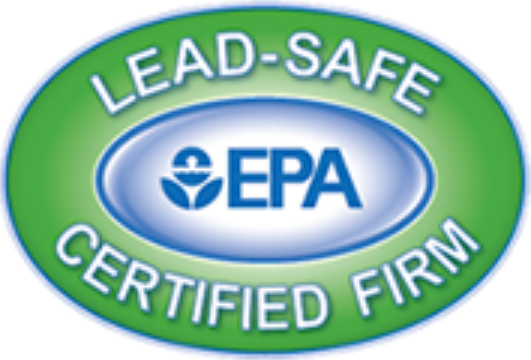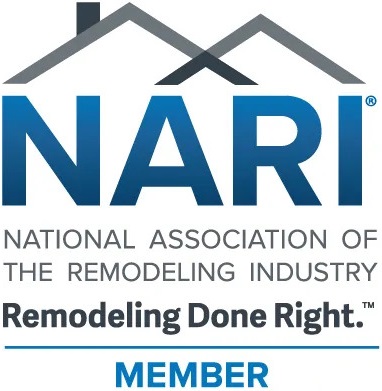Frequently Asked Questions
We know that you will have many questions about your kitchen, bathroom or basement remodeling project. You will discover that working with L3 Construction is a pleasant surprise. We want all our clients to be in the know about every aspect of their home renovation project. Below are some of our most frequently asked questions:
If you’re wondering what happens after you signed your Full Construction Contract, look no further! Before your project begins we laid out some helpful tips and a checklist for you.
In a pinch and need quick financing? Here is one option that may be of help to you. Please check out our fine partners at Greensky for several financing options with no obligation.
Here is an instructional video link about BuilderTrend and why it gives us an advantage over most remodelers.
https://vimeo.com/186487791/439b4fa4aa
Download the App for your mobile at the links below.
Apple
Android
Setup your bank account on BuilderTrend
BuilderTrend Payment Setup Tutorial
To pay a single invoice, navigate to the financial tab at the top and select Invoices.
Once on the invoice screen, you will see a summary of all paid invoices and open invoices. You can either select the invoice number for more information, or click Pay Online to the right.
After clicking Pay Online, if you have not yet set up a payment method, you can add a payment method at this time.
If done correctly, you will receive a thank you message.
Invoices will be marked as paid within the Invoice tab.
Customer Portal Overview for Homeowners
This video shows the functionality within the customer portal.
Customer Instructional Video link:
https://btvideo.wistia.com/medias/jgea1wid68
To make a payment on an invoice, you must first setup a payment method. Once the payment method is set up & verified, you can save that payment method for future use and begin paying your invoices.
Pricing and Details for the average jobs we do
Wondering what to expect or not sure what to budget? Here are some of our typical projects and some job range costs to better inform you of where we typically land on the average job.
We find that the more info we share with you and the more transparent we can be the better!
Kitchen Remodeling
Average kitchen remodel scope of work:
- Demo existing kitchen
- New Layout for the space within the given footprint
- Replace all cabinetry with new cabinetry and hardware and accessories
- Natural stone or quartz countertops
- Tile Backsplash
- New sink and garbage disposal
- All plumbing fixtures/accessories
- Luxury vinyl flooring
- Recessed LED Wafer lighting + pendant lighting if you have an island or peninsula
- Ceiling finished to knock down and painted
- Appliance install (appliances purchased by homeowner)
- Painting of the walls and/or millwork
Includes smaller wall removal, upgraded lighting, switching, required ARC Faults, minor plumbing rough in adjustment, new cabinets, new quartz countertops, tile backsplash, LVP flooring, new millwork, appliance installation and other minor work.
Average range for this type of project $60,000-$90,000
This is a very broad range as size and scope of work will change prices dramatically.
Main Floor Remodel
Average Main floor extensive remodel scope of work:
- Design and layout the space to match your vision for your home
- Remove one or more walls to open up the space
- New custom designed cabinetry to fit your lifestyle and the space
- Undercabinet lighting, Pendants, LED Wafer (can style) lighting throughout, Lutron Casetta Smart Switching throughout, AFCI/GFCI per code on all
- Natural stone or Quartz countertops with new sink and disposal
- Tile Backsplash
- Add a gas fireplace
- Half bath with new toilet, vanity, countertops and all plumbing fixtures/accessories, and a new quiet bathroom fan
- Mud/Laundry room with new cabinetry and built-ins, installation of appliances (appliances purchased by homeowner)
- Luxury vinyl flooring and/or carpet throughout
- New doors and millwork
- Ceiling finished in knock down texture
- Painting of the walls and/or millwork
- Patio Door or front door replacement
Average range for this type of project $125,000 – $200,000
This is a very broad range as size and scope of work will change prices dramatically.
Bathroom Remodeling
ESTIMATED MAIN BATHROOM REMODELING COSTS
- Layout of the space stays the same
- Demo the existing tub/shower combo, toilet, vanity, flooring, etc
- Install a new tub/tile shower combo or larger custom tile shower
- Ceiling finished in knock down texture walls finished to level 4
- Paint the ceiling and walls
- Install a new vanity cabinet with a natural stone or quartz top, sink, faucet, and cabinetry hardware
- New high quality toilet
- Tile floor with tile baseboards
- New high efficiency quiet bath fan. WE HATE LOUD FANS!
- New Standard Non Framed Mirror (Typically 30×36)
- New vanity lighting
- Install all new bathroom fixtures (towel bar, tissue holder, etc.)
50-100 Sq. Ft. $30,000-$40,000
ESTIMATED MASTER BATHROOM REMODELING COSTS
- Demo walls to studs, remove tub (if applicable), walls remain with repairs done as needed
- Layout changes as necessary within given footprint
- Ceiling finished with a knock down texture, walls finished to level 4
- Paint of both the ceiling and walls
- Install new vanity cabinetry with a natural stone or quartz top, sink, faucet, and cabinetry hardware
- New tub (if applicable) and/or custom tile shower pan and walls with a recessed niche, and a single shower head
- New high quality toilet
- Tile floor with tile baseboards
- New high efficiency quiet bath fan. WE HATE LOUD FANS!
- New Vanity light fixture
- Added Recessed lighting
- Install all new bathroom fixtures (towel bar, tissue holder, etc.)
120-144 Sq. Ft. $50,000-$70,000
Basement Finishing
- Design and layout the space to match your vision for your new living space
- Blueprints designed on CAD for city approval
- Frame exterior and interior walls per layout
- All required electrical to complete the new space
- All required plumbing to complete the new space
- All required HVAC to make sure your new finished basement is cozy!
- Insulation per code
- Drywall installation, knockdown ceiling texture, walls to level 4
- Full bathroom with fiberglass surround or tile, quiet bathroom fan, all bathroom fixtures, vanity, toilet, mirror, lighting, etc
- Mix of luxury vinyl flooring and/or carpet throughout
- Matching doors and millwork package to your existing home
- Painting of the walls and/or millwork
Average range for this type of project $75-85 a square foot for all living spaces to be finished. Your Mechanical room does not get figured into the finished square footage.
High-end remodeling projects with L3 Construction are focused on every detail being perfect. Kitchens, bathrooms and other areas are deconstructed, designed and finished with care and a focus on doing the job right the first time. From flooring to cabinetry, to islands and fixtures, ceilings, lighting, layout and trim, L3 Construction completes your home remodeling project with attention to detail. This kind of superior craftsmanship is priced accordingly:
- Average Kitchen remodels range from $60,000-$90,000
- Main Bathroom remodels (50-100 sq. ft.) range from $30,000-$40,000
- Master Bathroom remodels (120-144 sq. ft.) range from $50,000-$70,000
Contact us for quotes on other spaces in your home.
Granite countertops are both durable and beautiful, which is why granite is such a popular choice for homeowners who are selecting the materials for new home construction and for those who are remodeling and want a kitchen that is both striking and practical. Caring for granite is different from caring for other countertop materials because granite is a natural stone that can be stained or damaged over time. Some maintenance is required to keep the dramatic look of granite at its best and brightest.
Light Daily Cleaning
Use a lint-free cloth or paper towel and a specially formulated granite cleaning product regularly to clean the counter, then dry the area with a separate clean cloth or paper towel. Do not use common abrasive cleaners, which can destroy the protective sealant on the granite.
Spills
In the kitchen, spills on the countertop may be a daily occurrence, and the quicker you clean them up, the less potential damage to your counters. As soon as possible, blot the spill with a soft cloth or paper towel, then clean the area with a granite cleaner and dry with a clean cloth. Remember to blot, not wipe, because wiping can spread the spill.
Heat
Granite is extremely durable. Though placing a hot pot or pan on it briefly might not damage it, it’s best to use a trivet beneath it, especially if you need to set a heated pan down for longer than a few seconds. As tough as granite is, extreme changes in temperature can harm or even crack it. Avoid the problem by using something between the hot pan and the surface of the counter.
Frequent Sealing
To keep your granite countertops protected from dirt buildup and staining, remember to seal them often with a stone sealer like Granite Gold Sealer®. Some people seal their counters every 6 months to a year, but you cannot over-seal stone. If your granite is dark, it will be denser, less porous, and less at risk for staining than lighter colored granite. While this means it may require sealing less frequently than lighter stone, it is still necessary to seal it frequently so it can resist everyday spills and stains.
Practical Preservation
Never stand on granite countertops. Use a ladder to reach lights that need changing.
Use a cutting board. It may be tempting to use the granite surface to slice foods, but don’t do it. While granite is scratch resistant, it isn’t completely impervious to scratching. And you’ll also save your knives, which are not as hard as granite and will become dull quickly if used directly on the stone.
Don’t skip regular cleaning. Even tiny particles can potentially affect the stone.
Use a mat or a trivet under anything ceramic, like a vase or kitchen utensil holder, to keep countertops scratch-free.
Polish granite frequently. Using a special polish for granite helps protect the stone surface from fingerprints or water spots by reinforcing the protective sealant, and it enhances the beauty of the surface.
General Care
Quartz countertops may not withstand the direct and sudden transfer of heat from pots, pans, and other cooking units and heated items. Use a hot pad or trivet underneath these items to prevent damaging your quartz countertop or surface.
Whether high, neutral, or low pH, do not expose quartz to abrasive or strong alkaline, acid, or oxidizer cleaner. Avoid abrasive or strong free radicals. Various chemicals are corrosive and/or erosive in their ability to attack any structure, including quartz. Be very aware of these potential damages to your surface.
Where there are visible seams in the quartz surface, the product pattern and shade can change.
Avoid hitting surfaces with force, as the quartz may chip or crack.
Cleaning
Do not use or expose quartz countertops to such products including, but not limited to the following: bleach, oven cleaners, Comet, Soft Scrub, SOS, products with pumice, batteries, paint removers, furniture strippers, tarnish, silver cleaners, or similar products.
Do not use abrasive or harsh scrub pads.
Do not apply any sealers, penetrants, or topical treatments to quartz under any circumstances. These products will wear off and cause the gloss to appear dull or inconsistent.
Semi-polished finishes (1cm) will not shine and will soil the countertops. They will appear stained from soiling.
Granite and quartz are popular choices for countertops and flooring. Granite is a very durable natural stone with a high aesthetic value. It is heat and scratch resistant but also porous and therefore possible to stain; it requires periodic maintenance. The quartz used in countertops and flooring is a man-made combination of resins and crushed quartz. The resulting surface is non-porous, meaning it is more stain resistant than granite and requires less maintenance overall. Quartz is also very heat and scratch resistant. Most granite will be more expensive than quartz.
Silestone is one popular brand of engineered quartz that is imported from Spain.
Properties
Granite surfaces come from naturally-occurring granite rock which is mined and cut into large but manageable slabs for surface construction. Quartz surfaces, however, are engineered. They almost entirely consist of natural materials, but the combining of those materials is completely manufactured.
Over 90% of quartz surfaces consist of ground up quartz minerals, while resins — the two most common being polyester and epoxy — make up about another 7% of the materials. These resins bind the crushed quartz into a single form and to any additional color pigments or fillers, such as crushed mirrors, colored glasses, metals, and even shells.
Appearance
Though it is possible to purchase solid-color quartz surfaces, many choose the quartz surface designs that mimic natural stone. As such, granite and many quartz surfaces often have very similar aesthetic qualities — speckled, neutral tones — and can sometimes be difficult to tell apart from a distance. This is somewhat unsurprising, as every piece of granite naturally contains quartz minerals, meaning there is often some overlap in appearance.
Close inspection of quartz surfaces that are designed to mimic natural material reveals quartz has more uniform patterns and colors. Its man-made appearance is simply not as random as what is found in a natural stone like granite or marble, but this is improving with time and technology.
Durability
Either surface is sufficiently strong for general use in kitchens or bathrooms. With proper care, granite can last a lifetime in good condition, and many quartz manufacturers offer lifetime guarantees on their surfaces. Where the two types of surface differ most is when it comes to their ability to resist damage.
While granite is a very durable rock, it is not without natural flaws that have the potential to make it weak in certain places over time. These weaknesses, though rare, can make certain parts of the stone susceptible to cracking or chipping. In contrast, such flaws are essentially engineered out of quartz surfaces, making them harder and more durable than granite. The quartz mineral itself is one of the hardest in the world — harder, even, than diamonds. Even so, the man-made aspect of quartz can, on very rare occasion, also mean there are manufacturing mistakes which could cause some of the same problems for quartz that granite’s natural flaws can cause it to have. Purchasing granite or quartz from a reputable seller with good guarantees is a must.
Though quartz is often touted to be more heat and scratch resistant than granite, neither surface will be easy to scratch or damage with heat during general use. Quartz, however, is much more resistant to spills and subsequent staining than granite is. Natural stone like granite is porous, meaning it absorbs liquids that are not cleaned up quickly enough; these liquids can noticeably and permanently stain the stone, especially if the spills are highly acidic. Granite is not exactly easy to stain — in fact, it is the most stain resistant of the natural stone surfaces — but quartz, as a non-porous surface, is nearly impossible to stain. To make granite more stain resistant, it is important to maintain a sealant on its surface.
Applications
Granite and quartz are good in kitchens and bathrooms, where hard surfaces are often desired. They can be used for countertops, flooring, and even backsplashes and walls. Neither surface should be used outdoors: As a slightly porous surface, granite will be vulnerable to the elements or to water in bathrooms. Depending on a quartz surface’s makeup, it can fade in direct sunlight.
Maintenance
On a day-to-day basis, both granite and quartz are easy to maintain. Cleaning either surface is as simple as using water and dish soap with a cloth or sponge. Unlike quartz, though, granite requires additional periodic maintenance. A surface sealant plays a vital role in protecting granite from stains, and resealing is required annually or at least once every two years. Because quartz is non-porous, it does not need a sealant to protect it from stains.
Cost
Quartz is usually cheaper than granite. Granite prices range from $40 to $150 per square foot, including the cost of installation, with price variances often connected to colors and general aesthetics. Quartz surfaces generally cost $50 to $100 per square foot, including installation costs. Both surfaces are extremely heavy and require professional installation.
When deciding between granite and quartz, it is also important to take into consideration the long-term costs of granite, which periodically requires professional resealing. Quartz has few if any expenses after its installation.
Send Us A Message!
L3 Construction wants you to be pleased with every aspect of your home renovations, and that includes the details. We offer only the most superior products, hardware and workmanship to complete your kitchen, bathroom or basement renovations. Complete our online contact form and include any questions you may have about financing, communication throughout your project or our scheduling. A team member will be in touch shortly.




